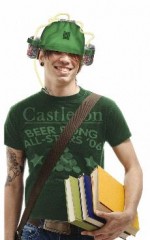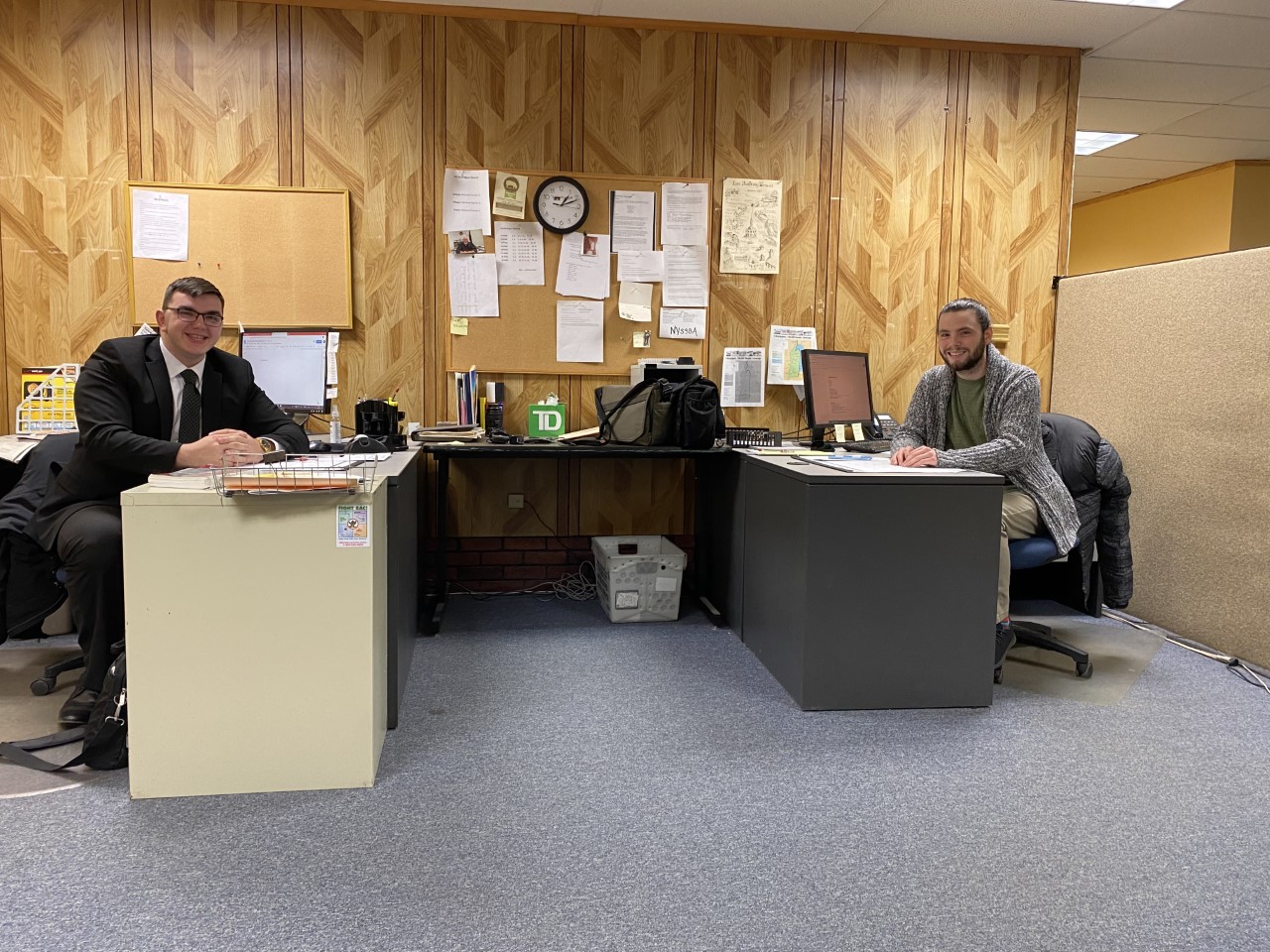A bunch of drunks at CSC?

The results are in — and they aren’t pretty.Castleton State College students have less self-confidence and a lower ambition for success than average students across the nation. One statistic, however, that isn’t lower among incoming CSC students: drinking.
The college recently released results of the 2006 Cooperative Institutional Research Program – a survey that all incoming freshmen took during fall registration.
The survey asks questions about educational and social skills and aspirations, along with questions about family, political views, and self-confidence.
According to Kelley Gilmour, who oversaw CIRP process, the survey is designed to “provide Castleton with a detailed profile of the freshmen class, including their expectations about their first year at Castleton.”
The results break down the answers between males and females, and also shows them in comparison to students from other national four-year colleges with a similar enrollment as CSC, and to all national four-year colleges.
The results show a reason for concern when compared to answers on the national level.
They detail how CSC students have lower self-esteem, show a lower drive to achieve and participate in community involvement, and have fewer high school academic achievements than students nationally. This year’s freshmen class also has a greater percentage of students who drank alcohol than national averages and they spent more hours each week partying while in high school. There is also a higher percentage of students at CSC who want to play varsity sports than nationally.
The breakdown between males and females is quite different as well. Where females were more academically successful in high school, expect to be happier at CSC and plan to be more involved in school activities, males have parents that have higher education levels, and consider their computer skills greater.
The CIRP results show that CSC was the first choice for 66 percent of 2006 incoming students (split evenly between males and females), but only 29 percent of males and 43 percent of females believe they will be satisfied here.
Academic Dean Joe Mark said that the results concern him, but he said he does not think that they are as big of a problem as they may appear to be on paper.
“Many of the students that come to Castleton haven’t discovered their own potential. The way you think of yourself goes hand in hand with your performance,” Mark said.
But self-confidence is a problem that Mark sees in many incoming students. According to the CIRP results, just 46 percent of males and 28 percent of females considered themselves “above average” intellectually, compared respectively to 63 and 48 percent of students in colleges of similar enrollment.
Only 56 percent of males and 36 percent of females considered themselves “above average” in self-confidence socially, compared respectively to 58 and 49 percent nationally.
Mark pointed out that another question on the survey asks if a mentor/role model encouraged them to go to college and just 10 percent of CSC students said that their influence was “very important,” whereas nationally 22 percent of students noted this as a “very important” reason.
Mark believes that a lack of role models could be a reason that CSC students’ drive to achieve is more than 10 percent lower than national results.
“A big challenge we face as an institution is to show students their potential that they don’t think they have,” said Mark.
Another area where CSC was below national average is school involvement. Twenty-two percent of CSC students said that the chance is very good that they will participate in student clubs/groups, and 11 percent will participate in volunteer or community service compared to 34 and 21 percent respectively in comparative colleges.
Mark points out that although those numbers are low, 28 percent of students at CSC expect to play varsity/intercollegiate athletics compared to 18 percent nationally. The fact that more students are participating in athletics could be a reason why they are less involved in other groups, Mark said.
Another troubling number is 61 percent of CSC freshmen (67 percent males and 54 percent females) drank beer before college, compared to 40 percent of national college freshmen.
Mark believes that this result is in part due to CSC’s students coming primarily from the Northeastern United Staes, which has more alcohol use than other regions. This fact correlates with the numbers given on the Department of Health and Human Services Web site.
Other Vermont state colleges could not be compared because Johnson State College’s academic dean Daniel Regan said that JSC does not use the CIRP or any other survey for incoming students, and Lyndon State College administration could not be reached in time for publication.
Freshmen Corey O’Brian, who remembers filling out the CIRP during registration, has his own ideas on why the results of alcohol use are higher at CSC.
“I think CSC is known as a party school so people come here thinking it’s an easy school and wanting to party,” O’Brian said.
Although O’Brian doesn’t believe that CSC truly is any more of a party school than elsewhere, he does think that CSC has a reputation, saying “high school students who drink may come to Castleton instead of a school where drinking is not as common.”
This past fall was the first time that CSC used the CIRP since the early 1980’s according to Mark, although an alternative survey had been used since, which Mark believes was not as efficient.
Students who wish to obtain a copy of the entire CIRP results can do so through Mark.




